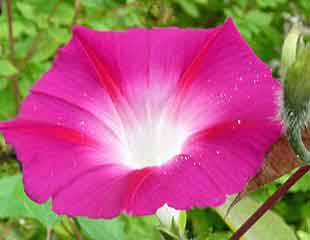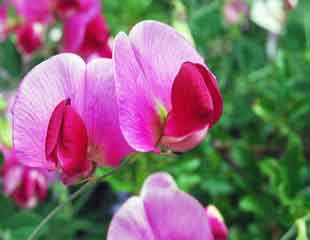


What does Frost Hardy Mean and why does it matter?
Gardening books, magazines and plant labels refer to plants as "Hardy" or "Frost hardy" with a "H" rating. It is important to know the H rating, because if the plant is not sufficiently hardy for a UK winter, it will die over winter, or will need winter protection.
When you are buying a garden plant, you need to know if it will survive a winter. It is costly if it does not. Also, it is time consuming to grow less hardy plants, which need to be moved under glass, or sheltered and/or wrapped up for the winter. It is easy to spot a lovely-looking plant or grass in the garden centre, only to find it is not hardy.
Confusingly similar plants in the same group can have different hardy ratings. For example, some varieties of Lavender are more hardy than others, as are different types of Salvia. This means when buying a plant you need to check the label for information not just about the group, or genus, but also the variety.
The original basic system of hardiness classification was to demonstrate the level of cold and frost the plant could withstand and was in widespread use until relatively recently. It was a simple *** rating.
Illustrated above are the three extremes of plant hardiness: the annual Ipomoea originally from the tropics, it is very tender. Sweet Peas (image centre) are half-hardy annuals and will take a degree of frost. Choisya (image right) is very hardy.
Just the cold which takes its toll on plants, other factors such as rainfall, chilly winds, high levels of water. A Pittosporum tenuifolium survived for several years in my garden, in a sheltered spot, and was classified as *** hardy under the old plant hardiness rating system. It perished in a bad winter, not just because of the cold, but the winter wet. Under the new 2013 scheme, Pittosporum would be classified as H3, showing a more tender nature. The current system introduced in 2013 and it takes into account more variables.
The hardiness classification system is to inform the buyer. More detailed information has refined the 2013 classifications. For example, on the question of lavender, Lavender Angustifolia 'Hidcote' has been moved to H5 so the buyer knows if choosing a Lavender for a more exposed site to pick H5 not H4.
Frost Hardy Rating
The Hardy rating system was introduced by the RHS in 2013 with an additional 7 classifications which enable the plant buyer to be more confident in choosing a garden plant. The RHS classifications of plant hardiness are as follows:
The Frost Hardy table rating

Plants which will only tolerate temperatures Above 15 degrees C - over 59 F
These are very tender tropical plants which require all year round protection in a heated greenhouse- not suitable for growing outside

Plants which will tolerate temperatures of a minimum 10- 15 degrees C - 50-59F
Subtropical plants which need extensive winter protection - usually in a heated greenhouse, but which can be placed outside during the summer.

These plants require a minimum temperature of between 5 - 10 C 41-50F
These plants can be grown outdoors during the summer. If a perennial plant it will need to be moved into a sheltered greenhouse/under glass over winter

Plants with a temperature range of between 1-5C 34-41F
Tender plants requiring a frost free environment. These plants will tolerant low temperatures, but not being frozen. They can only be grown outside in very sheltered areas (except during the summer months)

These plants are hardy down to -5 and up to 1 C and 23 - 35 F
Typically, these plants are only hardy outside in sheltered areas, coastal gardens and those providing mild winters. In other parts of the country, they will require winter protection.

Plants in this group are hardy -5 to -10C or between 14 - 23F
This group of plants is hardy in an average winter in UK, and in gardens which are not too exposed or too wet. These plants are not fully hardy and may not be hardy in exposed or northerly gardens.

Plants are considered fully hardy down -10 to -15C and between 5 - 14F
This is a hardy rating which is good for most of the UK, hardy in most areas, including in bad winters. However, in very exposed and northern areas in cold winters, the foliage may suffer from cold and wind burn.

Plants which are very Hardy will withstand temperatures down -15 to -20 and -4 to +5F
Hardy to all areas of the UK and will withstand severe winters, prolonged cold and frosts

Most hardy of all these plants will withstand temperatures down to over -20C and -4 F
Very hardy will withstand any winter conditions in UK and severe winters hardy to any part of the UK.
The Old Frost Hardy Table

These plants cannot tolerate temperatures below 0C - 32F
These plants are not frost hardy, and will not withstand a temperature below 0 degrees. They will require winter protection.

One star denotes frost hardy down to 0C or 32 F
Often described as "half hardy" withstanding temperatures down to zero, but not below, or for prolonged periods. Requires winter protection.

Described as 2 star hardy will tolerate temperatures down to -5C 2 -3 F
Frost hardy in many parts of the UK but mainly in the more southern areas and sheltered gardens. These plants will not withstand a bad winter or exposed areas.

Fully hardy will withstand temperatures down to -15C 5F
Described as fully hardy in all parts of the UK able to withstand severe winters
